If you have missed the launch of the Canon EOS R5 mirrorless full frame camera, you have lived under a rock for at least a year. Or perhaps you aren't interested in new cameras. The Canon EOS R5 is the most advanced Canon mirrorless camera on the market. Canon Netherlands gave me one for a week to make an extensive review.
Meet the Canon EOS R5, the flagship of modern mirrorless cameras with the latest techniques and options available on the market. It is the successor of the Canon EOS R and EOS RP, which are the first full frame mirrorless cameras Canon released. The Canon EOS R5 can't be compared, though. It is a professional model with the features most professionals would like to have.
The first feature that comes to mind is the double card slot, which was missing in the first two full frame mirrorless Canon cameras. The sophisticated autofocus system and the in-body image stabilization system are a welcome feature also, of course, although the latter might not be the most important feature for some photographers.
Filming With the Canon EOS R5
There has been much discussion about filming with the Canon EOS R5. It has the ability to film with an 8K resolution and 30 frames per second. The amount of data generated is so much it leads to serious heat build-up. The latest firmware update changes the way how the camera deals with the temperature control and thus improved the experience greatly.
I don’t want to go into depth about filming with the Canon EOS R5. There wasn’t enough time in one week to dive into it, and I wanted to see how the camera performed from a photographer's point of view. The only thing I would like to mention is the change in the film menu Canon made. It is much improved compared to the menu I have seen in the Canon EOS 1D X Mark III.
The Looks
The design of the Canon EOS R5 is very similar to the Canon EOS R model. But there are a lot of differences also. The infamous touch bar of the Canon EOS R has been replaced with the more traditional Canon button layout, joystick, and rotation wheel. The four buttons on the left side are gone because of the articulating LCD screen. Some of these buttons have a different, perhaps better location. The buttons on the top side are gone also. These functions, like white balance, autofocus, and ISO settings can be changed when pressing the M-Fn button.
The Canon EOS R5 has a nice but small square screen that shows the camera settings. The information is divided into two different pages. You can change the page by pressing the light button. Holding down the button for a second will change the screen from black to white.
The PSAM wheel is missing. You can change the PSAM settings by pressing the mode button. This is a big difference compared to the Canon EOS 5D Mark IV. I prefer the PSAM wheel over the mode button, but this is a matter of getting used to it. The on-off switch is quite prominent, which turned out to be very handy after using the camera for some time. It is very easy to use it, which can help to extend battery life.

The layout is much like the Canon EOS 5D Mark IV. There is no touch bar anymore, which is a good thing .
The Canon EOS R5 has three rotation wheels that can be programmed to your needs. I like to use it for changing the aperture, shutter speed, and ISO level. It offers a very quick way to change settings. With the control ring on the lenses, there is a fourth wheel available. All wheels and buttons are well placed and have a nice feel. I had no difficulties finding the buttons on touch. The less important buttons are recessed, which makes it easier to distinguish these buttons without having to look at it while photographing.
The Menu and Customization Possibilities
I have seen and worked with almost every camera brand on the market, and I think the menu structure of Canon EOS cameras is one of the best there is. The Canon EOS R5 has the same menu structure with the special mirrorless options added. As mentioned before, Canon has improved the film menu, making it more logical and easier to understand.
Extra options among others are the possibility to customize the electronic viewfinder information, the type of shutter, and focus peaking. The menu also offers a great level of customization. Nearly every button and wheel can be changed to your own needs. The flexible My Menu gives the ability to gather most used menu functions for easy and quick access, divided over multiple tabs if needed.
It is possible to operate the camera completely through the touchscreen. It is also possible to change the focus point while peering through the electronic viewfinder, just by swiping over the screen. It is a much easier way compared to the joystick. The latter can be used also for changing the focus point. Canon now offers the possibility to change the sensitivity of the joystick, making it much more efficient to use compared to the Canon EOS 5D Mark IV.
Unfortunately, there is no optical sensor in the AF-ON button like the Canon EOS 1D X Mark III has. I really love that smart controller, and I wish Canon had incorporated this small gem. Using the touchscreen to change the focus point works very well also, but you need to take your thumb off the AF-ON button. (read my review about the Canon EOS 1D X Mark III)
The Canon EOS R5 Versus the Canon EOS 5D Mark IV
I have used the Canon EOS 5D Mark IV for many years. I truly love the design of that camera, the way it handles, and the results it produces. It has been the favorite camera for my photography, even after I had the opportunity to test and review a lot of other cameras from Sony, Olympus, Nikon, Fujifilm, Leica, Hasselblad, and Panasonic.
The Canon EOS R5 feels like the mirrorless version of the Canon EOS 5D Mark IV, with a lot of improvements that have become possible because of the mirrorless system. Fortunately, Canon has kept the ergonomics, which resulted in a smaller camera body, but not too small. It is only a little bit smaller and lighter, and I love it.
At first, the built quality of the Canon EOS R5 appears less robust compared to the Canon EOS 5D Mark IV. But appearances are deceptive. I have used the Canon EOS R5 intensively next to the Canon EOS 5D Mark IV during two weddings, and I didn’t felt the need to be more careful with the camera at all.
The Canon EOS R5 and the BGR-10 Battery Grip
Canon gave me the battery grip BGR-10 also. It gives the possibility to use two batteries and offers a second set of buttons and wheels for shooting in a vertical position. The size of the battery grip makes the camera bulkier and much heavier. This is inevitable, of course.
The BGR-10 grip is a bit longer compared to the camera body, something you don’t notice until you look at it. It handles well when using it in a vertical position. Although it eliminates the benefit of a smaller and lighter camera body, it might improve handling when using large and heavy tele lenses. I decided to use the camera without a grip.
Autofocus Performance
The Canon EOS R5 makes use of Dual Pixel CMOS autofocus, divided over 100% in the horizontal direction and 90% in the vertical direction. It has 5,940 autofocus points, and there is an amazing eye autofocus option, face autofocus, and body autofocus. The eye autofocus works with humans and animals, and you can set priority or let the camera choose. The touchscreen enables you to change the autofocus point to another person if needed.
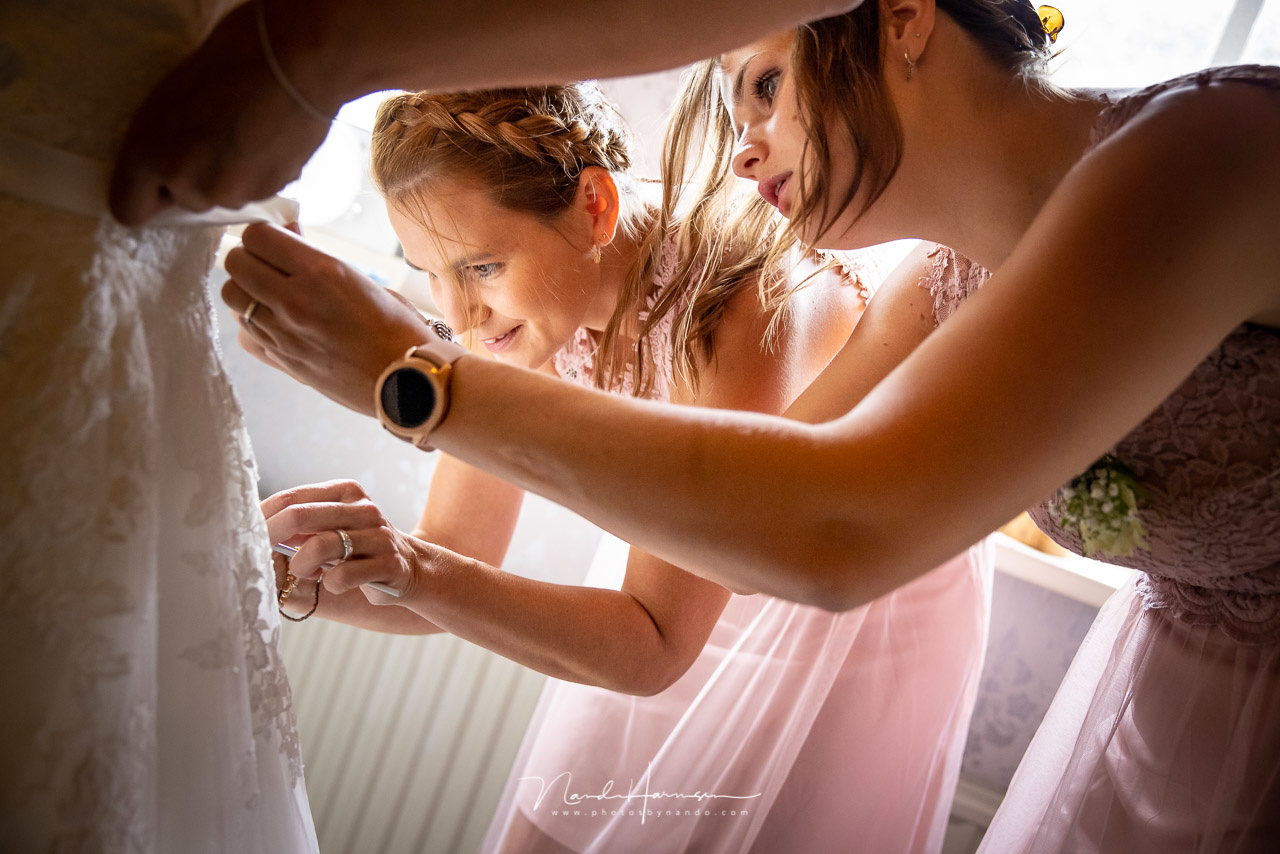
Eye AF works amazingly well. With the touchscreen, it is easy to change the position of the eye AF point.
I haven’t tested the autofocus and the tracking ability to a great extent, but I have tried to get an impression of what it is capable of. By photographing our dog with an 85mm lens at f/1.4 for a very shallow depth of field, I became very impressed by its performance. The animal eye autofocus managed to keep the focus on the eye while the dog was running towards me. If the dog's hair obscured the eye and the focus was lost, it managed to find the eye within a second.

The focus tracking and eye AF made it possible to keep focus on the eye of this running dog. I used a 85mm lens and aperture f/1.4, which made it very difficult because of the shallow depth of field.
The menu offers the same autofocus customization as previous EOS models, with the extra settings like touch and drag AF and eye detection. The M-Fn button enables a sub-menu where you can change autofocus settings very quickly, and the responsiveness of the joystick for changing the autofocus point can be customized. It reacts much quicker compared to the Canon EOS 5D Mark IV.
Real-World Use
One week with a brand new camera is not long enough, but I got a good impression of how it performs for landscape photography and wedding photography. The operation of the camera is a bit different from the Canon EOS 5D Mark IV but very familiar at the same time. The articulating screen in combination with the touchscreen is very convenient for photographing in awkward positions or from a tripod. The focus peaking makes manual focus very easy to use.
The in-body image stabilization works up to eight stops, which makes it easy to shoot without a tripod. The system doesn’t work for moving objects, of course. If the shutter speed is too slow, you might be able to shoot handheld, but the moving objects will cause motion blur nevertheless. Still, it is perfect for longer focal lengths.
During my weddings, the eye autofocus worked perfectly. It is reliable and fast. The touch and drag option makes it very easy to change the autofocus point from one face to another. I noticed how easy it becomes to rely on this system, especially when I switched from the Canon EOS R5 to the Canon EOS 5D Mark IV again.
How About the Battery?
The Canon EOS R5 uses a new type of battery with a larger capacity. It is backwards compatible with the older type of batteries, which is a good thing. If you have a bunch of spare ones, you can keep on using them, although the capacity is a bit lower.
The amount of shots you can take on a single charge depends on the way you are using the camera. For my landscape photography, I got approximately 200 to 300 shots, because I use the LCD screen for a longer period of time per photo. But I got over 1,000 shots on one battery charge during the weddings.
The bottom line is the battery capacity is not as great as some of its competitors, but it isn’t bad either. Just make sure you get a few spare ones in your bag. If you want extra battery capacity, it is also possible to use the battery grip.
My Conclusion After One Week With the Canon EOS R5
I have heard a lot of stories and rumors about the Canon EOS R5 on the internet, about how amazing this camera is. Often, these stories are exaggerated, but in this case, I think it is the truth. I don’t care about the 8K resolution or the 4K film capabilities. I am a photographer, and I found out this camera is one of the best Canon cameras I have ever used.
I am very impressed by the autofocus capabilities, and it wouldn’t surprise me if the system is as good as the Sony eye autofocus, for which it is famous. Some say it even works better compared to Sony, but I can’t confirm this without a real comparison. Nevertheless, I do find it very reliable and found out I got many more perfectly sharp shots during my weddings compared to the Canon EOS 5D Mark IV.
The camera isn’t perfect, though. I still prefer a real PSAM selection wheel on top of the camera, and there is no quick way to activate bracketing. The optical sensor in the AF-ON button would have been nice to have, making the camera even more intuitive to use. Last, but not least, longer battery life would be great. I do believe most of these findings are very personal.
The conclusion I have after one week with the Canon EOS R5 is very clear. I want to have one, and I can recommend it for every wedding and landscape photographer. Too bad I had to send the camera back to Canon Netherlands.
Things I Like A Lot
- Size and dimensions
- Perfectly formed grip with enough space between grip and lens
- Amazing eye AF, face AF, and body AF
- 5,940 autofocus points, with 1,053 Dual Pixel CMOS AF areas, 100% horizontal and 90% vertical
- Accurate focus tracking with 20 frames per second in electronic shutter mode (12 fps mechanical shutter)
- Buffer for 87 raw files with SD card and 180 raw files with the CF Express.
- 45 mp resolution
- Double card slot (CF-Express (type B) and USH-II SD)
- In-body image stabilization up to eight stops
- Fully functional touchscreen with touch and drag AF
- Electronic OLED viewfinder with over 5 million pixels and up to 120 frames per second refresh rate
- The camera is completely silent with the electronic shutter
- Almost fully customizable
- Focus bracketing
- Bulb timer
- Time-lapse function
- C-raw file format
- ISO performance is increased over one stop compared to Canon EOS 5D Mark IV
Things That Could Be Improved
- No dedicated PSAM wheel
- No optical sensor in the AF-ON button like the Canon EOS 1D X mark III
- No dedicated button for AE bracketing shots
- Manual focus assist doesn’t show depth of field
- Battery capacity could be better (although it isn’t horrible either)
- Shutter speed can’t be dialed beyond 30 seconds (you need bulb for longer exposures)
Gallery
Although Canon provided me with this camera, I have no financial benefit or other relation to Canon. This review is my own opinion. I also would like to read about your opinion about this camera in the comments below.

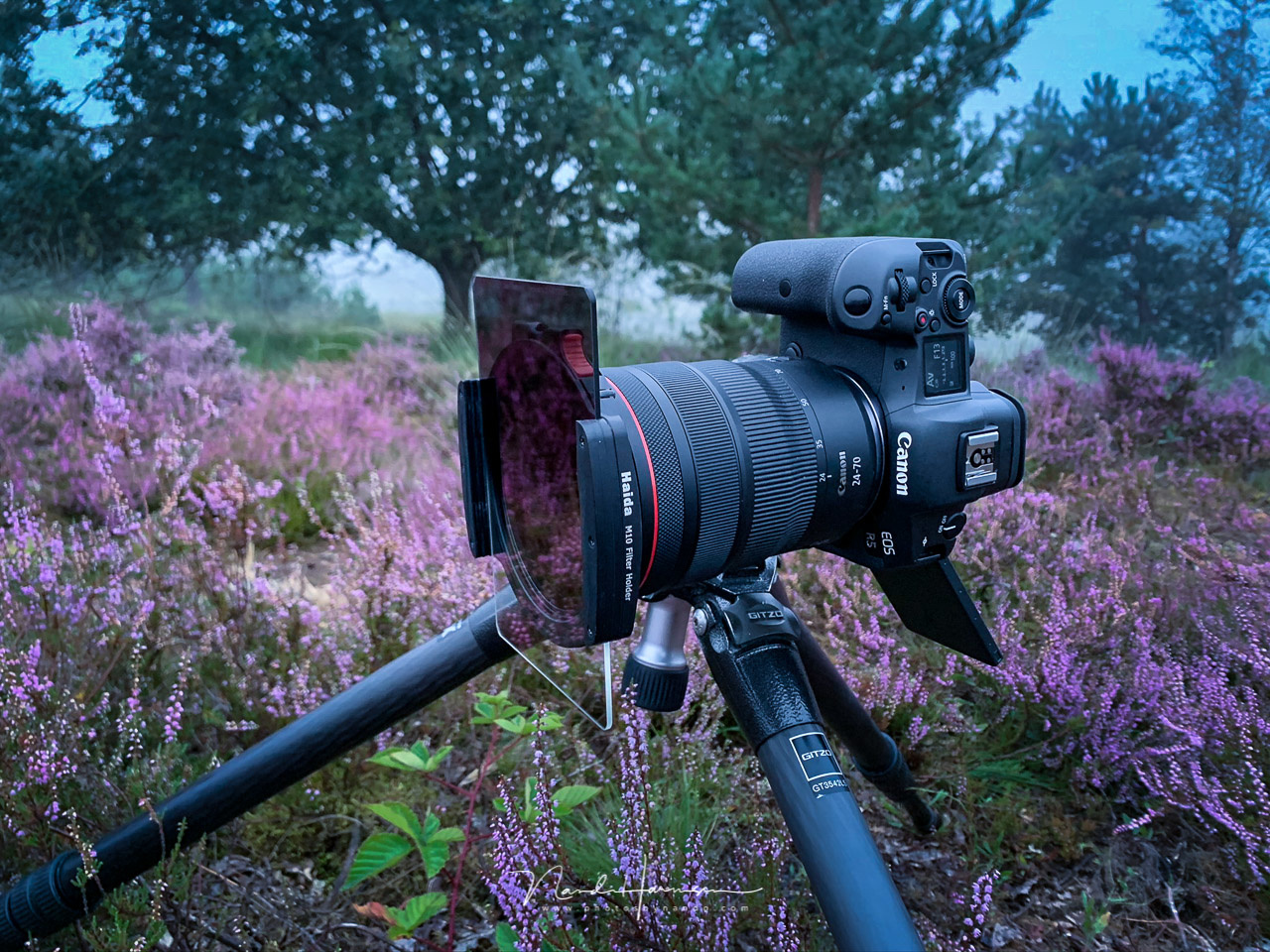


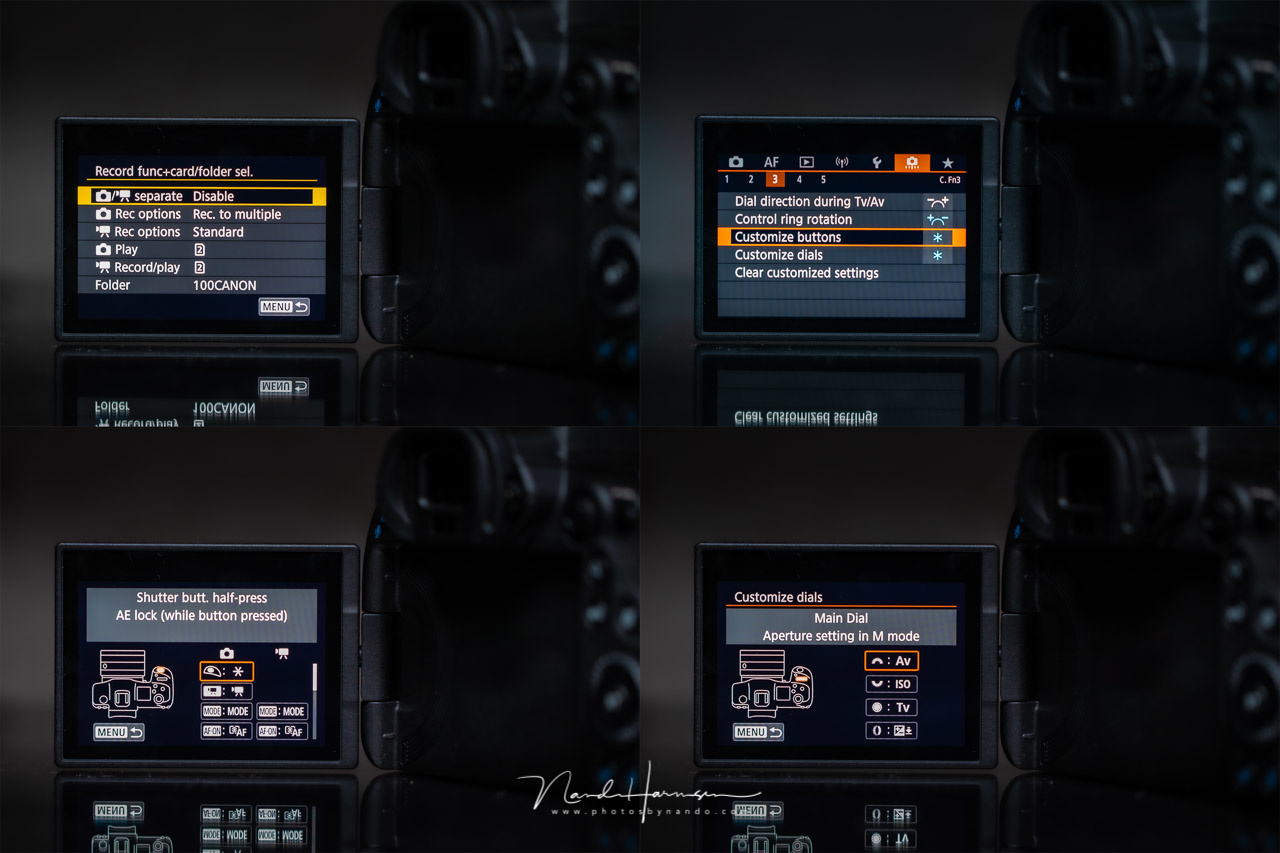

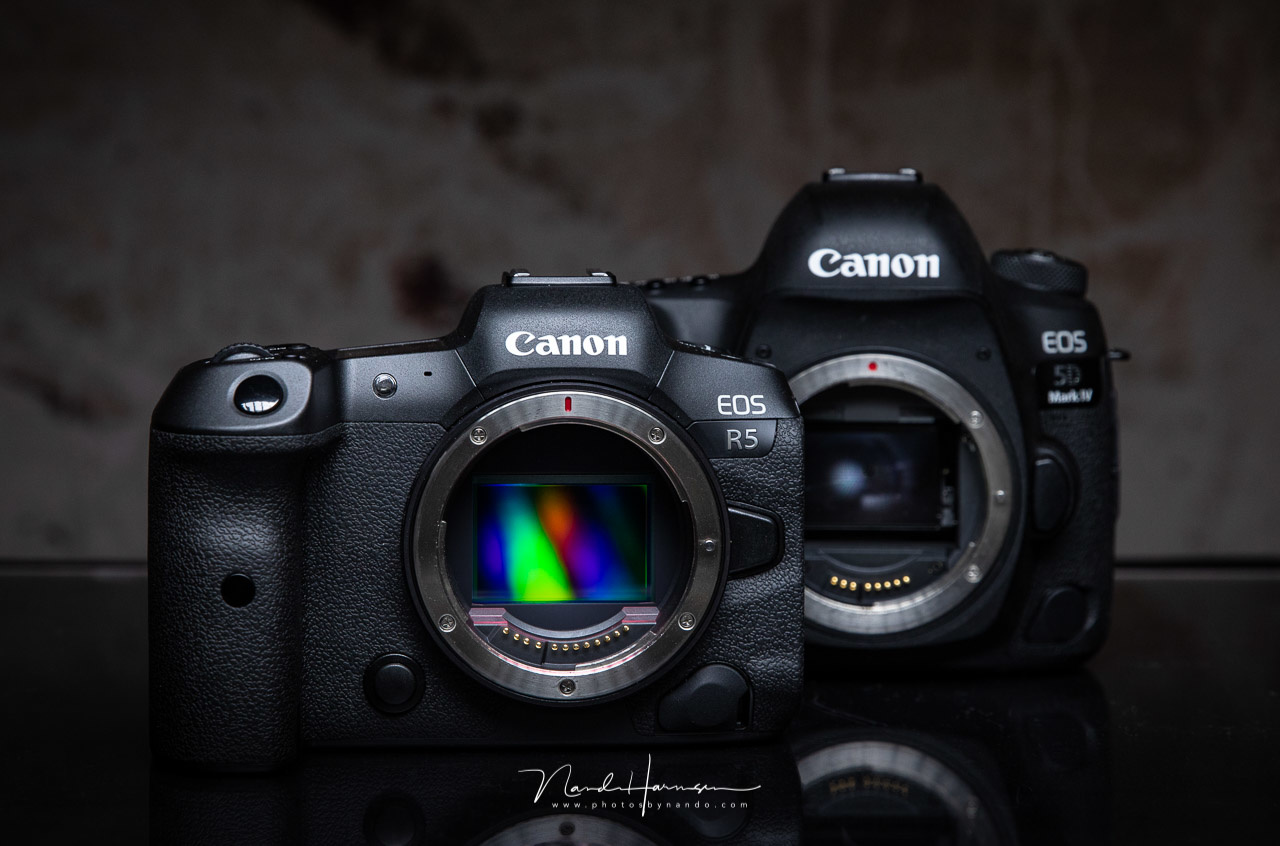
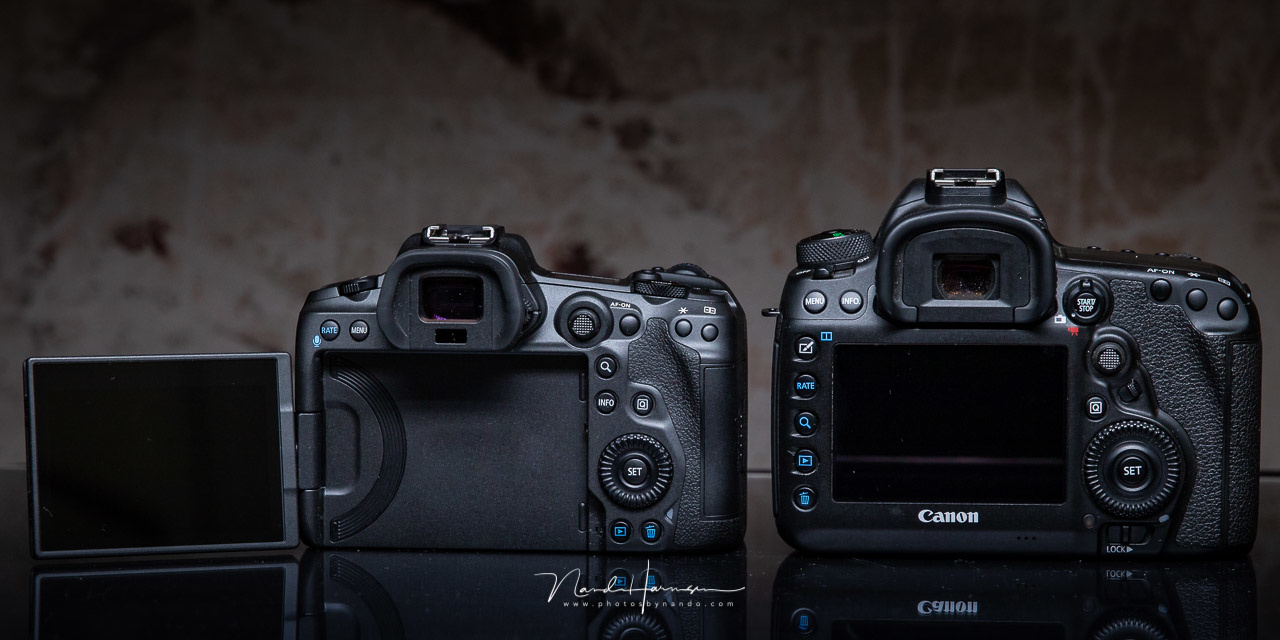










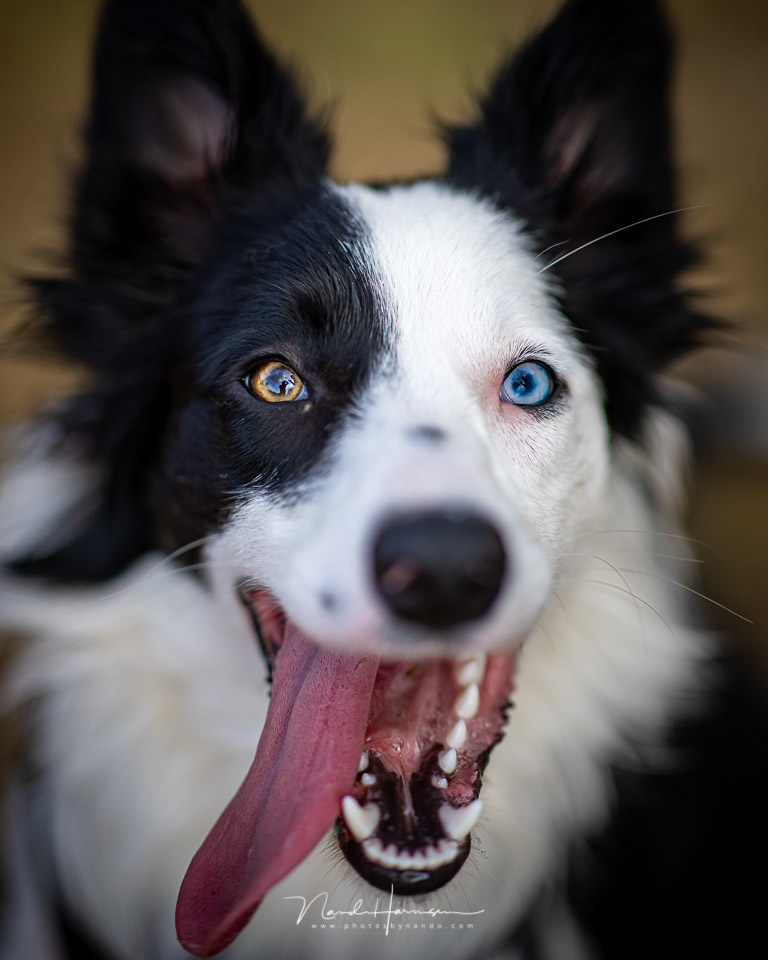
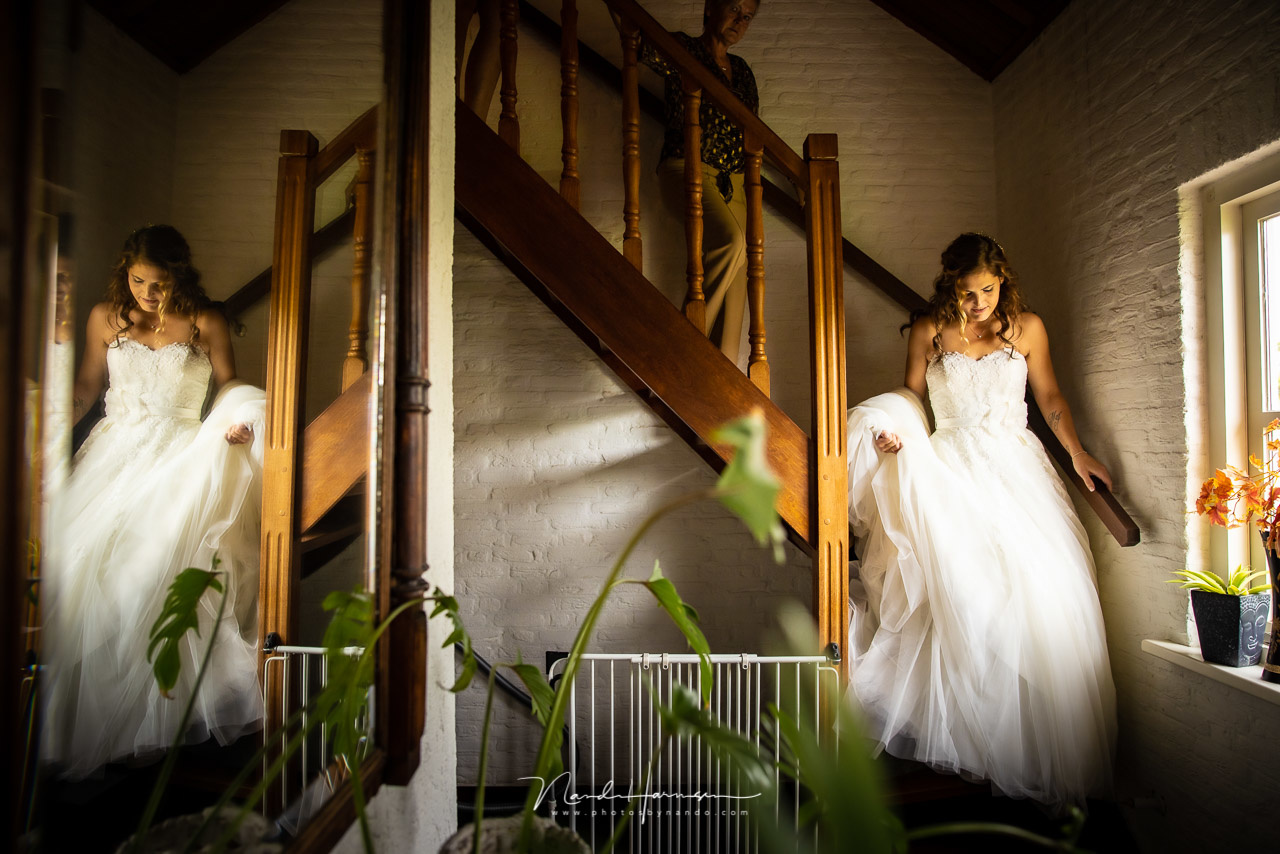


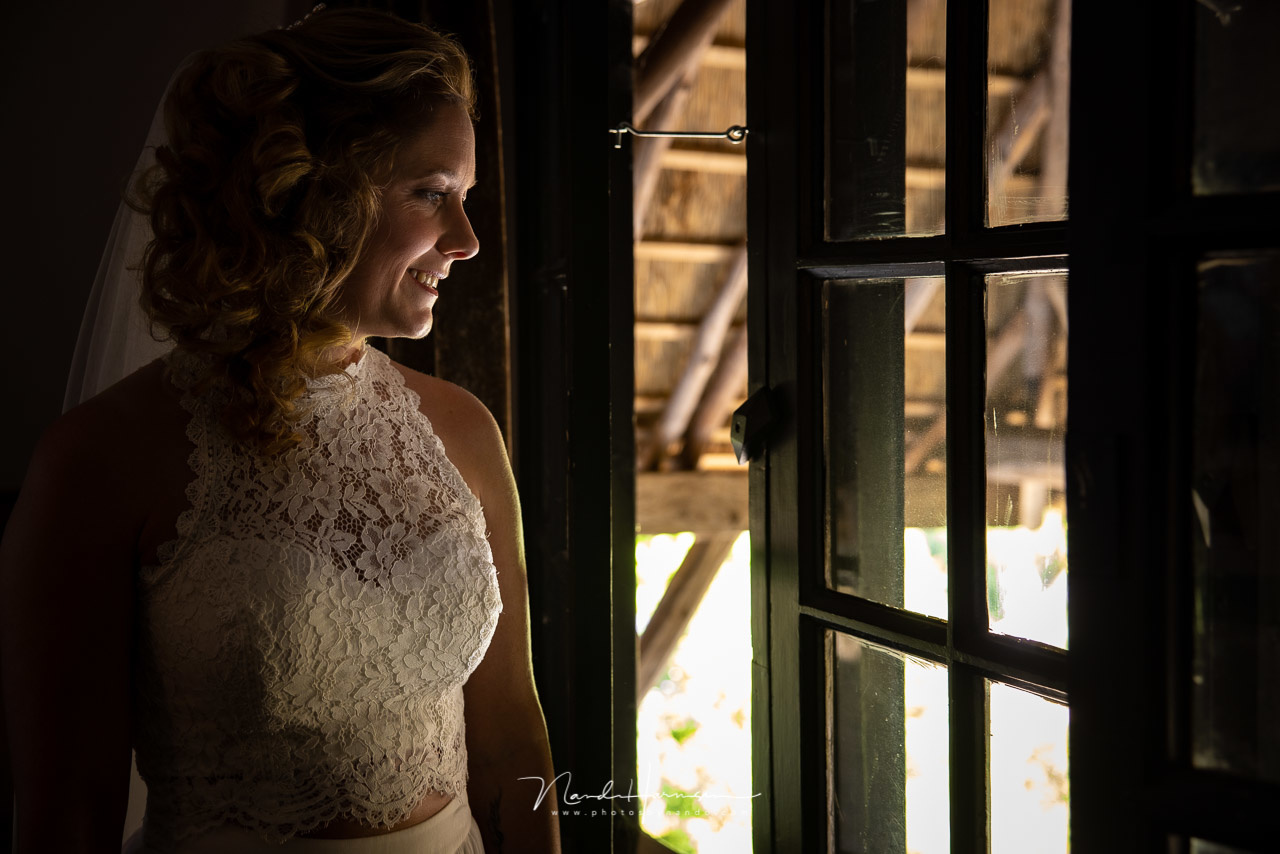
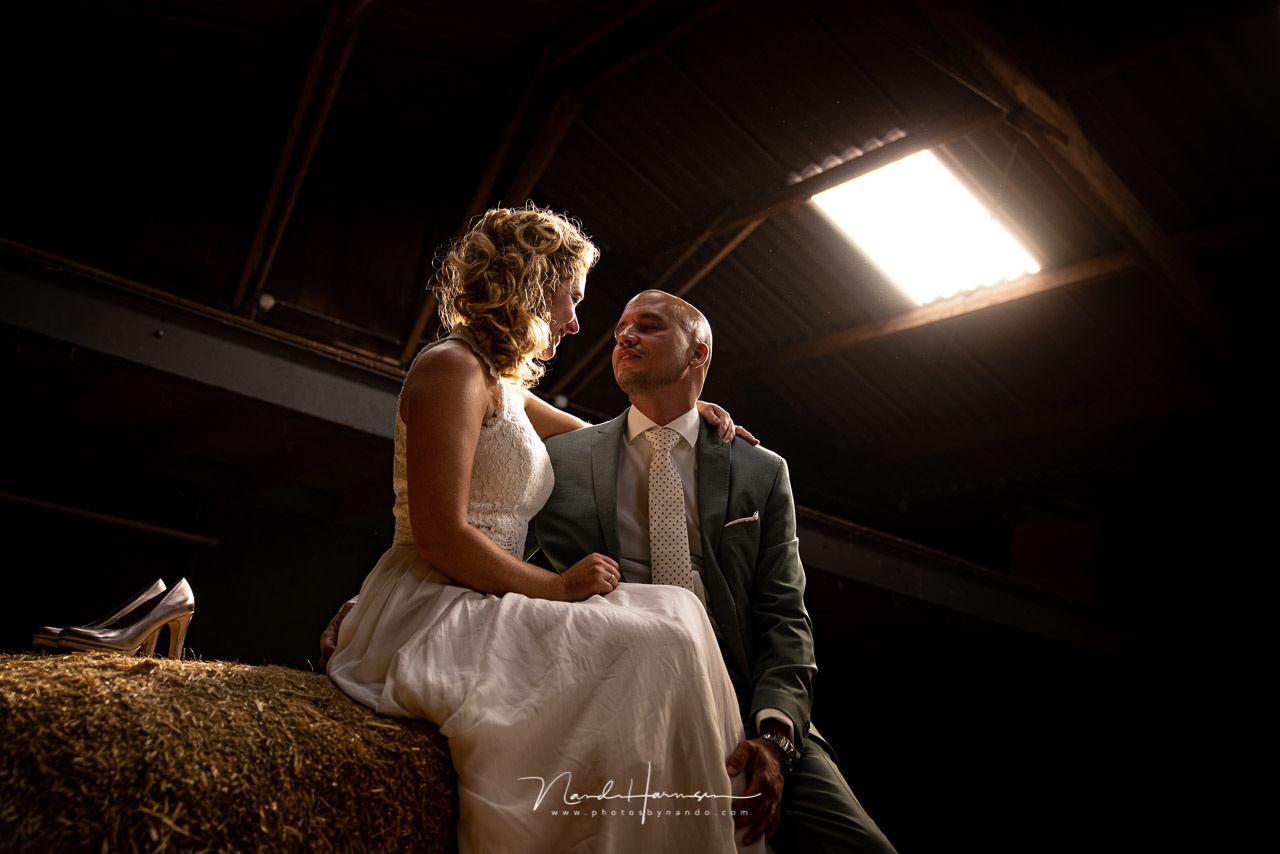

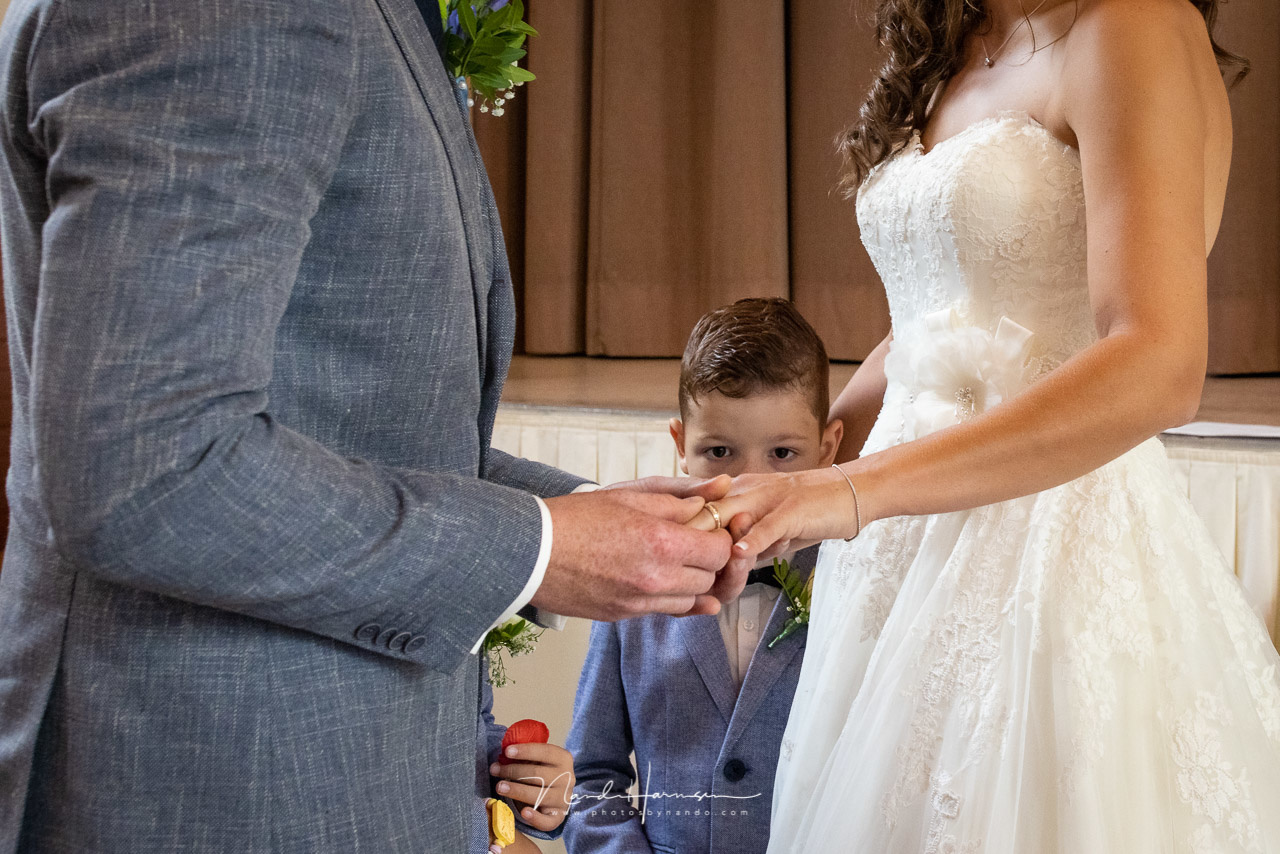
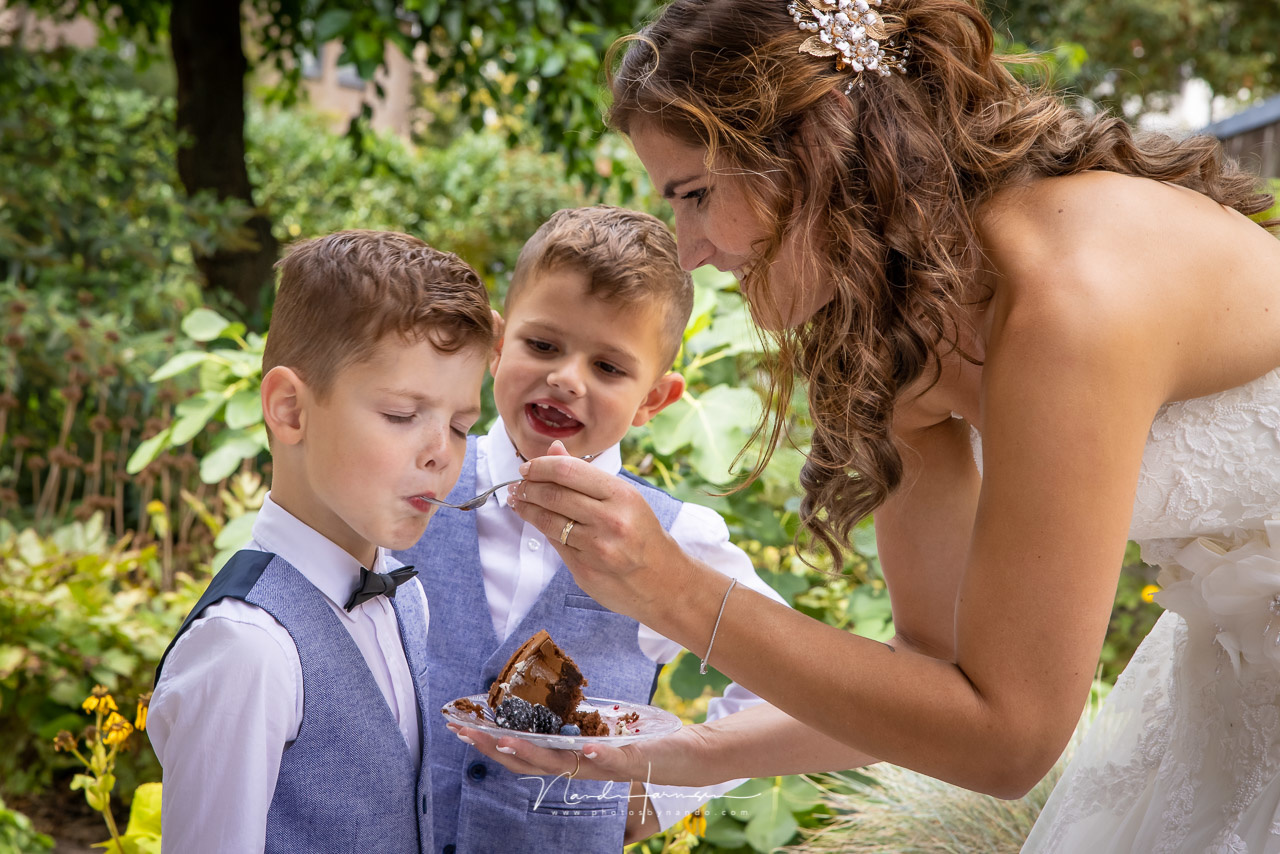






Very nice review. When it comes to camera usage, I'm much like the author; I don't give two shakes about the video side of things. It was nice to read a review that said little about the video side instead, focusing (sorry) on the photo side.
A lot more reviews have finally started to focus on stills only which is great to see.
Unfortunately YouTube reviews are obsessed with video and vlogging - finding a decent photography review for many new cameras is hard work, with 90% of them banging on about SLog, Luts, 4:2:2 and other things I don't understand.
I like your review. It is balanced and gives us a good insight into its abilities as a still camera. I just have one quibble about build quality. "I have used the Canon EOS R5 intensively next to the Canon EOS 5D Mark IV during two weddings, and I didn’t felt the need to be more careful with the camera at all". I am not sure you would have used it "intensively" when it is just lent to you for one week.
Sure it is. I have used it every day for hours.
Very little mention of one of the most infamous faults of the camera, i.e. the overheating issue? I've read even stills shooting is affected by overheating. And that's a vastly serious deal. You've had the camera for a week and weren't able to explore this? I know the article is nicely written and glowing towards the R5, but i'm a little thrown off that the one issue that has plagued this camera since it came out wasn't addressed.
Perhaps camera did not overheat during his review. How he suppose to address it? I don't trust anything that some youtuber puts up to generate likes and views. If you have first hand experience with stills overheating - tell us about it and if you don't, then whatever you read or watched on internet is irrelevant..
I have used the camera for hours and hours at a row and there is no overheating whatsoever. I believe the heating problem is just when using video, and mostly with the older firmware.
If you are using it for stills, there is no problem at all. Otherwise I would have mentioned it.
Read the title of the article. For once it's quite clear on this website with no click-bait attempt: R5 for PHOTOGRAPHERS !! Nobody ever said it overheats in photography mode, and Nando was quite clear he wasn't testing the video functions.
I have not seen a single review where the reviewer has claimed the camera 'overheated' in stills mode. In fact if you've been following the saga (and it sounds like you have been) you should know the 'overheating' is a timer which is built into some of the video modes.
Considering that 99% of the reviews on the internet are about overheating, I don't know what else would you expect / like to find out?
Feel free to Google search and find out everything you need to know.
As for overheating while taking stills, I have recently took a trip to the local zoo and took over 2k photos and there was no overheating.
For once is refreshing to see someone touching only the stills without wasting time on the video side.
R5 overheating during video has been discussed six ways from Sunday on every imaginable blog and Internet platform. Thank you for only giving it passing mention here and for "focusing" on the usefulness of the camera for still photography, which is a bigger concern for some of us.
Thank you, Alan.
It's a boring review like all the rest, just an empty conclusion that has been repeated now for awhile. No real depth about the image quality, changes in post processing, trusting eye AF vs traditional focus points, or composition techniques made easier or improved for example. The photos look great, but I'm sure your 5d4 could have produced the same thing.
You are right. I could have taken these with my 5D4 also. You cannot see any difference, except the files have more pixels. Isn't that great? You can continu shooting with the R5 as if you are using the 5D4, with every single benefit from eye focus and more.
I only had the oportunity to use it for a week. That is not enough time for all those pixel peeping things you mention.
But I cn add, I started to trust the eye focus after some hours during the first wedding, and started to rely on it. Something I never dared when using other cameras with eye focus. Post processing is not different from any other Canon, unless your computer has trouble with larger file sizes. About composition; a new camera doesn't make compositions easier, but I do think the 5940 AF points make it easier to place focus point somewhere in the screen, without the need for measuring AF before making a composition. But the eye-AF does the job for you.
"I don’t want to go into depth about filming with the Canon EOS R5. There wasn’t enough time in one week to dive into it." Damn is the cool down wait that long? Sorry I had to.
Hahaha
I have to remember this one. You gave a smile on my face.
4 people didn't recognize humour and sarcasm. well done sir! hehe
4 people bought the R5 before realizing the video was crippled and there merely to stand out from other companies on a spec sheet. It backfired and is now chasing more video centric people to Sony. Which most likely once someone is filming all their vids with Sony will figure, why not just shoot all their pics on Sony too. I don't like being treated like I am stupid by them.
well if 4 people have made that mistake they should have waited for reviews before rushing in! I'd buy this camera now after all the reviews, cause i don't care about video at all. Pretty sure it's an awesome stills camera. As for video, i couldn't care less to be honest. and if people bought it believing the marketing well... they should know better. GAS often leads to regrets.
I have two BMPCC 6K cameras for video. Without the big promotion of 8k internal blah blah blah, basically all they could've said is "Hey we finally have that Sony stuff added." As a mostly studio photographer, none of the stuff in the R5 really improves my work. I'll stick with the mark 4 until it dies. Then I still have the mark 3 that takes great pics. 3800.00 buys some better lighting, other lens, etc.
I had a chance to borrow an R5 last weekend - so I can start used to it while my order arrives, and I was shooting mainly wildlife with it. Other than two nuances I love this camera and cannot wait until my copy arrives.
Regarding to the build quality - I have realized over the last few years that I enjoy using big solid cameras. I’d pick a 1D body vs 5D for wildlife, or a Phase One vs a Fujifilm GFX for landscape any day of the week. But I guess it is very unlikely to have a high res sensor in a future R1 body.
About the EVF. I was shooting evf-only to save battery. I also set a very short time to turn it off for the same reason. So my little annoyance was that the EVF took a second or so to turn on after I peaked in, which was distracting when some action was happening.
I don't understand the thumb down that you got. The EVF comment is very useful in my opinion, and would be quite a problem for me with wildlife. How often are you waiting in a hide for something to happen, and you'll miss it while waiting for the EVF to turn on!
Same for me, I prefer a big solid camera over the small bodies. Plus, I have big hands, so while 5d mark iv was very confortabile to use, with the R5 I had bit of trouble trying to comfortably use my thumb for back focus.
I have added the grip and not looking back. Also this way creates a bit of balance when using the 70-200 or 100-400.
But that's just me.
If you want a camera that is build as brick you need EOS 1Dx mark III. But besides that, I think the R5 does a really good job.
I read somewhere how the EVF used more battery power compaared to the LCD. If it is true, I don't know, and I cannot remember where I read this comment. It might be something to look at.
Who are the people that complained about needing a camera that can hang from a keychain. What person is all of photography catering too after all these years of big cameras. I thought that was what point and clicks were for. Staring at an lcd and counting on all the auto af settings to do the job doesn't feel intimate for me as a photographer. I might as well just deliver the camera to their house and then use a remote over webcam. When is the auto shutter when the camera thinks it's a good shot feature coming.
You set the camera on a tripod and walk away and it will auto take and upload all pics it chooses to take to instagram with instagram filter added. Then everyone can do it and everyone of us can get that grocer job we've been dying to have.
Only thing I want now, is the same "Movie rec. size" page of the menu on the 1DX3. Can't be that hard to implement with a firmware update. It's quite horrendous to switch resolutions and fps without choosing the wrong one.
It is much much much better compared to the EOS 1DxIII. But a firmware update could change that. I wonder if Canon will do that
Do you have an opinion regarding the image quality of the R5 compared to the 5DSR. I love the images from my 5DSR and I am trying to decide if I want to switch. I use this camera for landscapes. I also own an EOS R and use its eye focus for portraits where 30 MP is sufficient.
I cannot say anything about that. But perhaps you can get an idea at https://www.the-digital-picture.com/Reviews/Canon-EOS-R5.aspx.
I have the comparison you need ;-) https://www.mibreit-photo.com/blog/canon-eos-r5-image-quality/
R5: roughly 1-stop better ISO and two stops more shadow pushing. But you get more hot pixels and a touch less resolution.
The things I'm most interested in, I didn't see in this review.
How is the durability in harsh outdoor conditions? Can it get knocked about on the rocks without losing any functionality? Can it withstand a fair amount of rainfall without any electronic issues? Can it get a bit of salt water splashed on it and not fail? Can you use it on a Sandy beach and not have sand work it's way into the body?
I would love to hear all about your experiences with it in harsh, rugged conditions. That's what matters most to me.
My Canon 50D, 5D, 7D, and 6D have all failed me terribly because they were not built solidly enough. My Canon 1Dmk2 and 1Dmk4 have been built "good enough" to last for several years, although eventually they succumb to heavy usage and fail to perform reliably. The jury is still out on my Canon 5Dmk4 because I've only used it for 9 months. I would really like to know if the new 5R is as rugged and durable as the 1 series bodies I have owned, or if it is frail and damage-prone like the other Canon DSLRs I've used.
I'm one of the first to criticise poor reviews on this site, but come on, be real. How do you expect to test these "harsh conditions"? No reviewer ever is going to drop the camera on a rock or hold it in rain to see if it holds. It's a 5-series, not a 1-series. It's not as rugged by definition. You want rugged, get 1DX Mark III like I did, or wait for R1 or whatever it will be called.
Actually, someone has come up with standardized testing for weather sealing and durability. There was just an article about it a few days ago, right here on Fstoppers. So yes, people can, and do, test for such things when doing reviews.
Heck, I can tell after just a few hours with a new camera what it will withstand and what it won't. Well, at least in a general way. Like if it doesn't have exacting enough tolerances to keep sand out, you can pretty much tell within an hour or two. And with rain or melting snow, a poorly sealed body will start giving me error messages, even if it is relatively new.
It's not like you need months with a camera to tell if it'll stand up to harsh conditions. The week that Nando had with the R5 should be enough time to tell a lot about how rugged and/or durable it is.
And by the way, I never criticized this review, nor did I say anything negative about it. I have appreciated Nando's writing for quite some time, and enjoy his content.
Nando should tell if it's rugged enough in a week, but you can't tell if the 5D mk4 is rugged enough because you've only used it for 9 months........ Lens Rentals has disassembled the R5 and where impressed by the weather sealing.
https://www.lensrentals.com/blog/2020/09/taking-apart-the-canon-r5-mirro...
I don't believe that I said that Nando should know that it is "rugged enough". Did I ever say that?
What I was hoping for were for some comments on the camera's ruggedness and weather sealing.
Whether or not a camera is "rugged enough" is subjective, as each user will have different needs and expectations, dependent on how one uses the camera.
I hate it when someone acts as though I said something that I didn't actually say. Sheesh!
My question is: Will it blend?
- anyhow, as I wrote on my previous commit, it is clearly not a 1D quality body. It feels similar to the 5D series, maybe a tiny bit less solid - due to the flip screen.
The Lens Rentals team did a tear down, and they discussed the sealing quite extensively there: https://www.lensrentals.com/blog/2020/09/taking-apart-the-canon-r5-mirro... .
What do you mean by, "Will it blend?"
"Blend" is not a word I see used when talking about cameras, so I am curious to know what you mean.
I didn't got a change to use it under rough conditions, but I got the impression it is similar to the 5D4. But it is never as solid as a 1Dx series. If you need a camera that can withstand a beating, I would choose a 1Dx mark III
Finally a good review without a large portion of video that I have to skip.
Thanks Nando.
Thanks Ruud
If I hadn't gotten my 5DIV's so recently, and if RF lenses weren't an arm and a leg, this would be the camera I use for weddings as well.
The 5D mark IV is a great camera for many different sorts of photography. This didn't changed with the R5 :)
I am sure you will enjoy the 5D4. They're wonderful cameras
"I am a photographer, and I found out this camera is one of the best Canon cameras I have ever used." you're welcome.
I am sure it is a great camera and it certainly has great ergonomics having handled one in a store. But the price of over £4000 plus the significant cost of lenses (which are mainly big and heavy) rules it out right now.
It'll come down in price eventually. I estimate that it will be available for 1600 US dollars on the used market in about 4 years. That's probably when I'll buy one .... if the durability and weather sealing are up to snuff.
The price is similar to the 5D4 at launch. The price will drop next year, I expect
Got a chance to try the R5 out. While I remain scathing about its overheating issues in higher quality video modes that renders it largely useless in that regard for meaningful video shooting, the R5 does seem to be an excellent camera for stills shooting. Really nice grip and feel in the hand, although the locations of the controls is not quite as good as Nikon. Viewfinder is excellent, fully articulating LCD is great, and the camera is very quiet in operation. Canon really should have left out the fancy/useless video modes and then the camera would have been pretty universally acclaimed as a fabulous camera.
If they had left out the 8k nonsense all they would've done is caught up to technology they should've had years ago. They tried to use the 8k as a marketing ploy and that's what made everyone made. Kind of like showing up for a 1st date and realizing the person used a fake pic on their social. Hard to see passed the betrayal and misleading promises.
If they didn't include video, people would have burned the cmera to the ground.